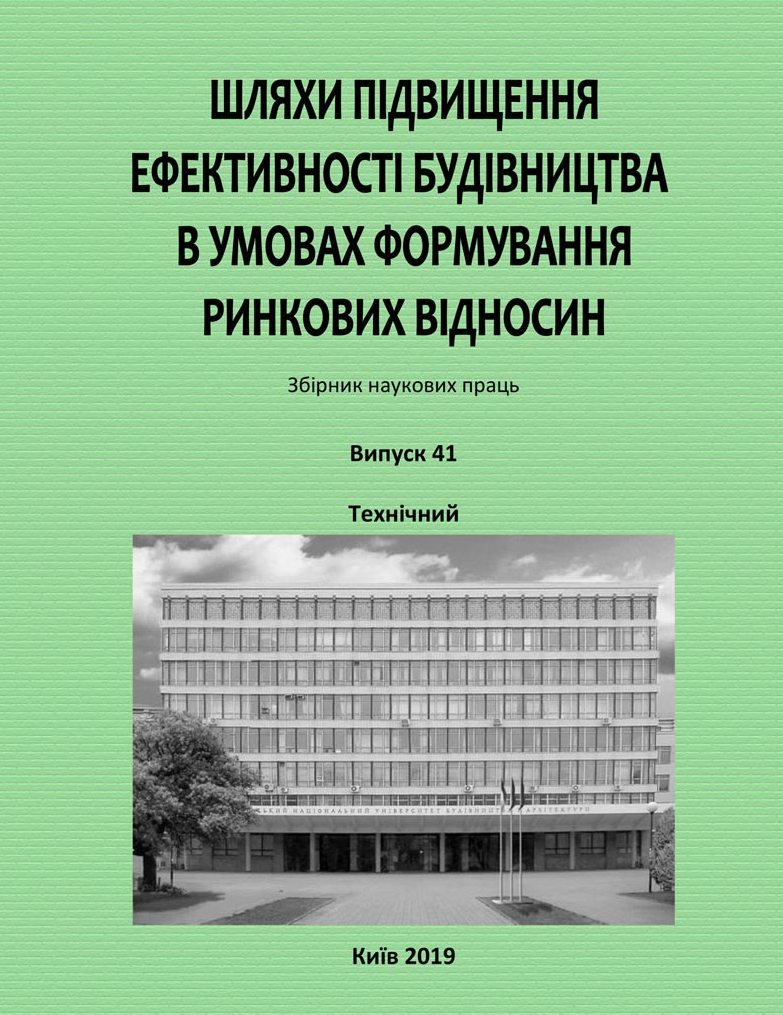Technological factors affecting the performance of the restored concrete structures
DOI:
https://doi.org/10.32347/2707-501x.2019.41.3-11Keywords:
concrete, reinforced concrete, strength of adhesion to the base, repair, restoration, repair mortarAbstract
The article presents the results of analytical studies of the scientific and technical literature in order to identify the technological factors that affect the physical and mechanical parameters of the restored concrete and reinforced concrete surface. The analysis revealed that during the restoration of concrete and reinforced concrete structures, physical and mechanical parts of the structure can be restored in case of change of technology of performance of works. Therefore, an important task is to identify the most influential technological factors that affect the performance of the restored reinforced concrete structures. These factors include: the state of the foundation of the restoration structure; method of applying repair materials; position of the repair surface relative to the horizon line; conditions of hardening of repair solution; sealing of repair material; in the arrangement of the contact layer, the dwell time between the application and its thickness; humidity of the restoring surface; ambient temperature during repair work.
It is revealed that the method of application of the repair material, the humidity of the surface of the concrete structures, the thickness of the contact layer and the dwell time between the application to the concrete surface and the laying of the repair material, the method of surface treatment, and its condition affect the adhesion strength of the repair solution with the base, position in space and angle inclination to the horizon of the restoration structure influences the tensile strength in bending, water resistance, frost resistance and adhesion strength of the repair solution with the base, conditions and retention time of the formwork material in the formwork, affect the adhesion strength, water resistance, corrosion resistance and frost resistance of the restored area, compaction of the concrete mixture is an important technological factor that affects the compression and bending strength and uniformity of the repair material, and the duration of the repair of the seal. , the ambient temperature during the repair works is affecting the physical and mechanical performance of the restored concrete and reinforced concrete structures.
References
Avrenyuk, A. N. (2009), “Restoration of concrete and reinforced concrete after the destructive impact of sulfur-containing compounds with cement-based materials”, Abstract of Ph.D. dissertation, Building materials and products, Ufimskiy gosudarstvennyy neftyanoy tekhnicheskiy universitet, Ufa, Russia.
Aheyev, A.O. (2016). “Rehabilitation of reinforced concrete hydrotechnical structures of reclamation systems by method of structural repair” Ph.D. Thesis, Agricultural reclamation, Natsionalʹna akademiya ahrarnykh nauk Ukrayiny Instytut vodnykh problem і melioratsiyi, Kiev, Ukraine.
Bugayev, V. A., Gorid'ko D. V. (2006), “Features of the restoration of buildings and structures for special purposes”, Nauka i progress transporta. Vestnik Dnepropetrovskogo natsional'nogo universiteta zheleznodorozhnogo transporta.
Dukhanin, P. V. (2001), “Improving the technology of repair of reinforced concrete structures of urban sewage treatment plants”, Ph.D. Thesis, Technology and organization of construction, Rostovskyj gosuarstvennyj stroytel'nyj unyversytet, Rostov-na-Donu, Russia.
Ismail El'-Rashid Ali. (1996) “Study of the properties of concrete for the repair of structures in hot climates”, Abstract of Ph.D. dissertation, Building materials and products, Vladimirskiy gosudarstvennyy tekhnicheskiy universitet, Vladimir, Russia.
Kononenko, A.N. (2008). “Technology of repair and restoration of damaged surfaces of reinforced concrete structures”, Ph.D. Thesis, Technology and organization of industrial and civil construction, KGTUSA, Khar'kov, Ukraine.
Starodubtsev, V.G., Goryainov, D.A. (2018). “Study of the influence of the technology of laying and compacting concrete mixture on the uniformity of the structure and properties of concrete”, Elektronnyy nauchnyy zhurnal Kurskogo gosudarstvennogo universiteta, no 1 (17).
Downloads
How to Cite
Issue
Section
License
Copyright (c) 2020 O. Molodid, N. Sharikina

This work is licensed under a Creative Commons Attribution 4.0 International License.
Authors who publish with this journal agree to the following terms:
- Authors retain copyright and grant the journal right of first publication with the work simultaneously licensed under a Creative Commons Attribution License that allows others to share the work with an acknowledgement of the work's authorship and initial publication in this journal.
- Authors are able to enter into separate, additional contractual arrangements for the non-exclusive distribution of the journal's published version of the work (e.g., post it to an institutional repository or publish it in a book), with an acknowledgement of its initial publication in this journal.
- Authors are permitted and encouraged to post their work online (e.g., in institutional repositories or on their website) prior to and during the submission process, as it can lead to productive exchanges, as well as earlier and greater citation of published work (See The Effect of Open Access).

